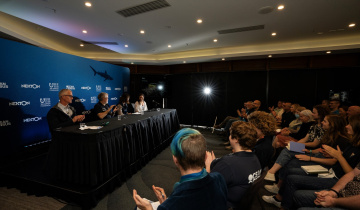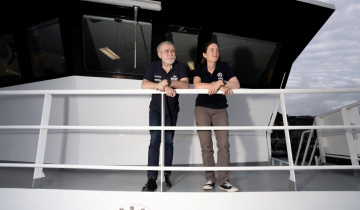New insight on sediment processes
Bringing the harbour back to life
Postgraduate student Peter Wilson (left) and Dr Kay Vopel measuring microprofiles. (Photo: John Zeldis, NIWA)
Coastal sediment acts as a biogeochemical reactor, breaking down organic matter through microbial activity and chemical processes, and releasing nutrients. Understanding the functioning of this reactor is key to predicting the effects of human activities, such as wastewater discharge, on coastal ecosystems.
NIWA has developed a new tool to assess sediment functioning using a combination of two high-resolution measuring techniques and a numerical model of the processes involved in organic matter breakdown.
We use a scanner to capture images of the different colour layers in sediments that result from a depth sequence of‘redox’ (reduction–oxidation) reactions. The interpretation of these colour profiles is aided by millimetre-scale profiling measurements of key pore-water solutes and the numerical model. “The model characterises the status quo of the sediment reactor and predicts its function under futurescenarios of human activities,” says NIWA aquatic ecologist Dr Kay Vopel. “The pore-water solute measurements help to fine-tune the performance of the model.”
This three-pronged tool has many applications, including assessing the environmental effects of fish and mussel farming, urban development, and dredging on coastal regions.
The tool has been developed with funding from NIWA and the Foundation for Research, Science & Technology.







